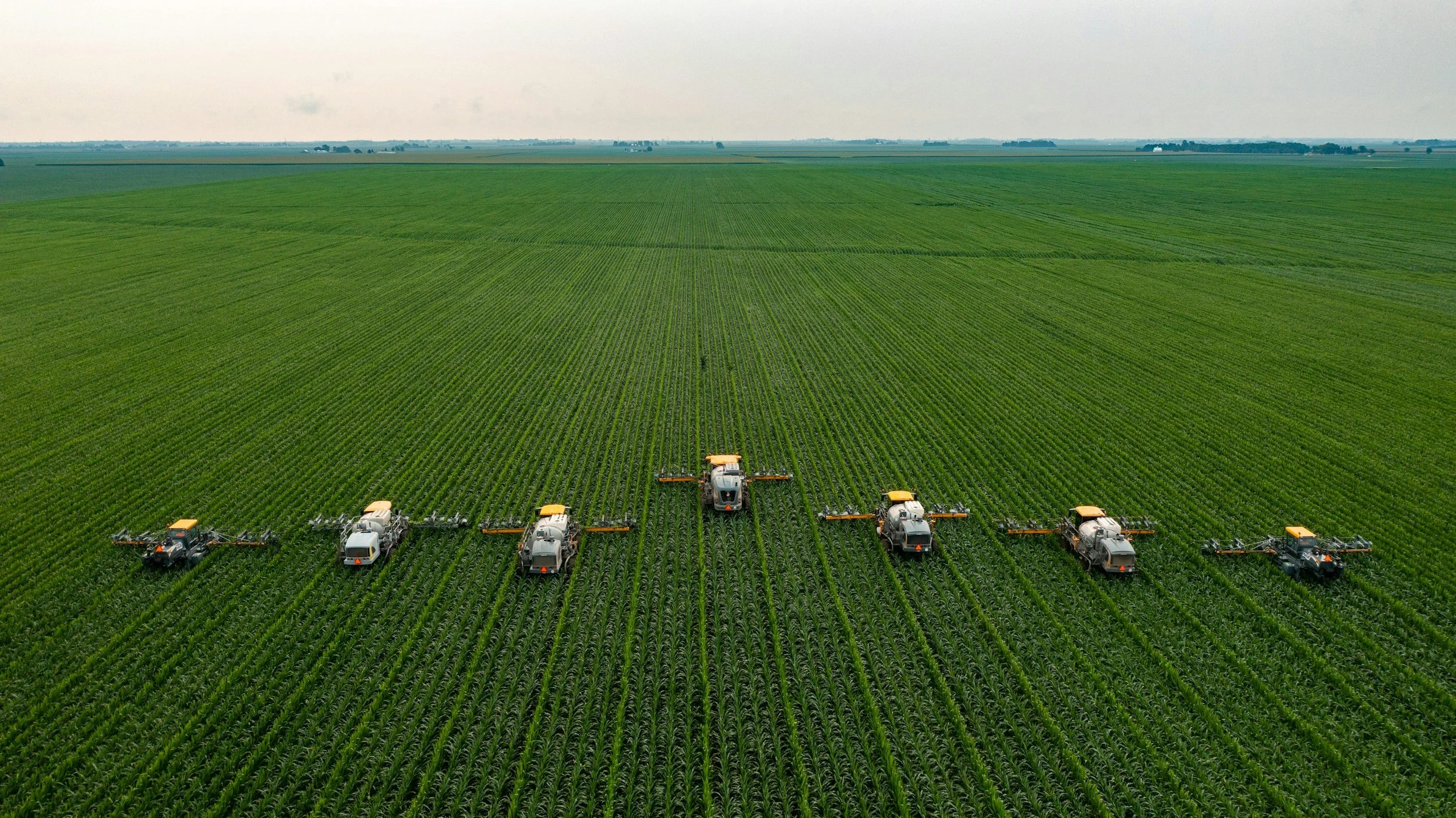Growing Herbs and Vegetables Indoors: Hydroponics for Winter Gardening
/(this article contains affiliate links)
Growing herbs and vegetables in an indoor garden doesn't have to be time consuming, difficult or expensive with a simple indoor hydroponic countertop setup. Hydroponic gardening is a great way to grow your food quickly and efficiently in an indoor environment. It eliminates the need for soil, since plants are grown in water enriched with mineral nutrients.
Hydroponic growing systems require minimal maintenance and can be set up on any flat surface indoors (a kitchen countertop works quite well!) Because the plants don't grow in soil, there are few to no bugs to deal with, either. If you've ever brought your plants indoors for winter, you know that fungus gnats, whiteflies, and even aphids can continue to be a problem throughout the cold months, especially if they lay their eggs in your potted soil. Although I have occasionally seen an aphid or two on my own indoor hydroponic plants over the years, their numbers were so low that I've been able to get rid of them easily and prevent others from infesting my plants.
With countertop hydroponic growing systems available for under $100 USD, there many options to choose from. They also make great gifts for gardening enthusiasts or anyone who wants to try their hand at gardening, even if they claim to have no skills for growing plants. Hydroponic systems are virtually fool-proof and require few tools to get started. Read on to find out whether hydroponics are a good choice for your indoor home garden.
Getting Started:
Hydroponic systems provide an easy way to grow plants without the need for soil. They can be a great option for gardeners who don’t have the resources, space, or time for growing plants in traditional soil and growing beds. All-in-one-systems make it easy for the newbie gardener, and provide experienced growers with a way to start seeds indoors in winter earlier than ever without having to worry about keeping your seedlings alive until they can be planted outdoors.
Generally, a hydroponic system consists of a nutrient reservoir with water and nutrients needed for plant growth, a net basket where the seed is placed along with clay pellets, coconut coir or a growing sponge to hold it in place. Finally, your all-in-one hydroponic system will come with either an air pump or circulation pump (in active hydroponic systems) or just an airstone (in passive hydroponic systems). In this article, we'll focus on active systems that making growing your own indoor herbs and vegetables as easy and maintenance-free as possible.
Active Hydroponic Gardens
Active hydroponics is a great way to grow large harvests of herbs or leafy greens with minimal effort. Pre-fabricated active hydroponic systems for small-scale growers are relatively inexpensive and easy to set up. The simplest home-use systems use a technology called 'Deep Water Culture," in which plants are suspended in baskets and a growing medium above a water reservoir. The plant roots grow into the tank and absorb water and nutrients from it. These systems are quite advanced and provide many options for optimum growing conditions, including light times, nutrient cycles, and water replenishment times. They require little maintenance and incorporate net pots that you can clean out periodically.
Active hydroponic gardens contain as few as 3 pods or as many as 18. Each pod contains a single plant, and depending on what you’re growing and what stage of growth the plant is in, you may need to keep the lights on for 12 or 18 hours per day. The convenience of these systems is in being able to plug them in and set the light for the interval of time you want. There are a few things to keep in mind, however, to get your hydroponic garden running properly, growing healthy and remaining clean and algae-free.
Set up and Maintenance
Set up is easy, and small-scale pre-fab hydroponic systems come with instructions that make them simple and quick to get set up. You'll need to choose a spot where the bright light and motor sounds won't bother you, though, as the system will be running constantly. Although most systems use quiet pumps, the lights will be on for a long period of time - from 12 to 18 hours for most systems.
Regular maintenance of a hydroponic system is important for getting healthy growth and high yields from your plants. The amount and type of maintenance required will depend on the system you have, but there are a few general tips that can help with any type of hydroponic system.
Treat your water (maybe). What kind of water should you use in your hydroponic system? Personally, I use water filtered through a Brita pitcher, but you can also collect rainwater or use distilled water. Tap water may be ok to use, but some plants will not like the chemicals in your tap water. You may want to get your water tested or use distilled or filtered water if your tap water is nigh in chemicals or minerals. Other methods you can try are setting out tap water for a few days or boiling it and letting it cool before using it. Setting it out will allow the chlorine in the water to dissipate, while boiling it will help soften hard water and remove some of its contaminants.
Check your water levels regularly - the water level in your tank should be high enough to cover the roots, but not so high that the plant roots are constantly submerged.
Monitor your nutrient levels - there should be enough nutrients in the solution for the plants to uptake, but not so much that they start to suffer from nutrient burn. Your system will come with instructions about how often you should change the water and nutrients. Keep in mind, a plant's nutrient needs will change throughout its growth cycle, and you may need to double the amount of nutrients to your plants in their active growth stage.
Clean your system - always make sure to clean out your tanks and reservoirs regularly to prevent algae growth. As a general rule of thumb, you can clean out your system weekly. To cut down on the algae growth, cover the basket around the stem of the plant as much as possible. If your system doesn't come with covers, you can make your own by cutting pieces of foil into circles and cutting halfway through the circle on one side. Slide the foil, slit side first, onto the basket around the stem of the plant. Make sure no light shines through the basket into the tank below - this is what encourages algae to grow.
Monitor your plants - make sure to keep an eye on your plants and look out for any signs of disease, pests, or nutrient deficiencies that may be affecting them.
Check your pH levels - you may also want to check the pH levels in your system weekly as they can sometimes swing too low or too high.
What Herbs and Vegetables Should You Grow?
When it comes to growing herbs and vegetables in a hydroponic garden, you have plenty of options to choose from. Leafy greens like lettuce, kale and spinach work well, as do herbs such as basil, oregano, thyme, dill and mint. In addition to these traditional choices, there are also some more unusual plants that can be grown hydroponically, such as watercress and Asian greens like bok choy or tatsoi. If your outdoor planting season is still a couple of months away and you're itching to get started with your garden, you can also use your system to start seeds and keep them alive and healthy until it's time to transfer them to pots or transplant them outside in the ground.
Although some growers say that you should use seeds that are specially formulated for hydroponic systems, I have never found this to be the case. You don't need to go out and buy specially formulated seeds for your hydroponic garden. Make sure, though that your seeds don't need any special treatment before planting. For example, some seeds need a 30-day period of cold stratification, in which you keep them in the fridge before planting. Otherwise most healthy and viable seeds will work. I've been consistently surprised by how fast some seeds sprout, and most grow quickly, producing thick, abundant root systems that are much healthier than their counterparts grown in soil.
If you don't have seeds on hand, you can also use seeds taken from the produce you get on your next food shopping trip. I've grown many plants in my own hydroponic system from seeds culled from produce we bought at the grocery store.
A Hassle-Free Indoor Garden
Growing plants hydroponically is a great way to continue gardening during the winter months, or when you have limited growing space. Although it does require an upfront cost for equipment and nutrients as well as some dedication and regular monitoring, the rewards of having an abundance of fresh herbs and vegetables year-round are well worth the effort. With proper care and maintenance, your hydroponic indoor garden can provide you with healthy and delicious produce all year long.
Recommended products










































If you’ve ever turned to magazines, gardening shows, or even your local nursery’s stock to try and plan your spring garden, you’ll know it’s easy to feel overwhelmed by all the information – some of it conflicting – you can find out there. This is especially true if you’re new to gardening. As the days become warmer and longer, more people start shopping for plants and gardening supplies. It really is a perfect time to start planning a food and/or aesthetic garden, even if the weather hasn’t quite warmed up enough for you to transplant everything into beds outdoors.